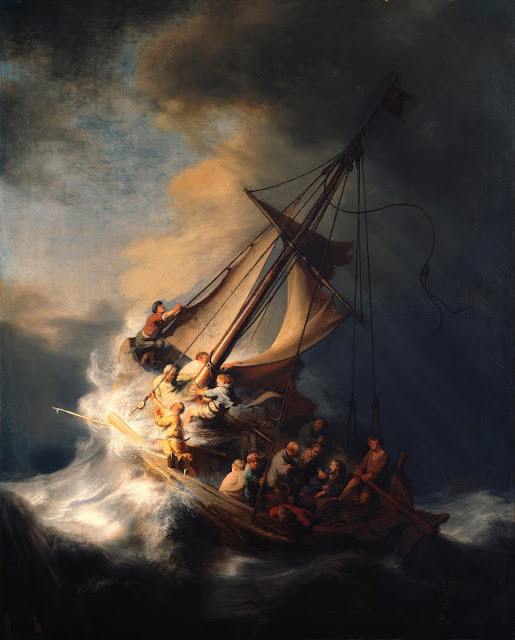Rembrandt (1606-1669) is considered one of the greatest visual artists in the history of art. To me, what is remarkable about his work is the depth of empathy he has for the human condition. This is what led Clark to name him, "One of the Great Prophets of Civilization!" (Civilization: A Personal View).
His life is one marked by deep grief from losing his wife and three of his children to the grave at an early age, followed by a number of other significant losses. This undoubtedly impacted his art in which there is a beautiful melding of the earthly and spiritual with grief often not too far from the surface. Perhaps that is why he understood the frailty of the human frame so deeply, and with it, the ache of existence. One wonders if he channeled his grief into his work to paint images that are both powerful and evocative.
Rembrandt's work is deeply emotional and his Biblical scenes demonstrate his inner response to the scriptures they depict. One of his paintings that has been capturing me lately is The Storm on the Sea of Galilee
The Storm on the Sea of Galilee. 1633
This is a remarkable painting, and Rembrandt's only seascape, which is a great pity because he is a master at capturing the waves. I feel like the sea is churning and roiling like a bilious body of water, and the movement of the disciples as they strain at the front of the boat brings action to the entire scene. Yet Christ sits at the back of this writhing vessel, completely calm. It's an epic representation of the narrative of the life of Jesus that I especially adore - that of Him in the storm with those he loves. He is a "with-us" kind of God in all the struggles of our lives, and he is calm and completely in control. Nothing troubles him. The way Rembrandt paints, I can only guess at his own feelings about an out of control life, and the suffering that comes simply because we are human, and within the context of that he forms this image of the frantically struggling disciples (one of them being a self portrait). He sees himself as one of them, with Christ, and yet looking to the viewer, drawing us into this scene to engage, deeply.
Tragically, this picture is not available for public viewing since it was stolen (with a number of other masterpieces) from the Isabella Stewart Gardner Museum in 1990, and all that is left hanging is the empty frame. What sorrow that society has been left bereft of one of the greatest art works of all time. The world has been robbed of a work from one of the great prophets of civilization.

Comments